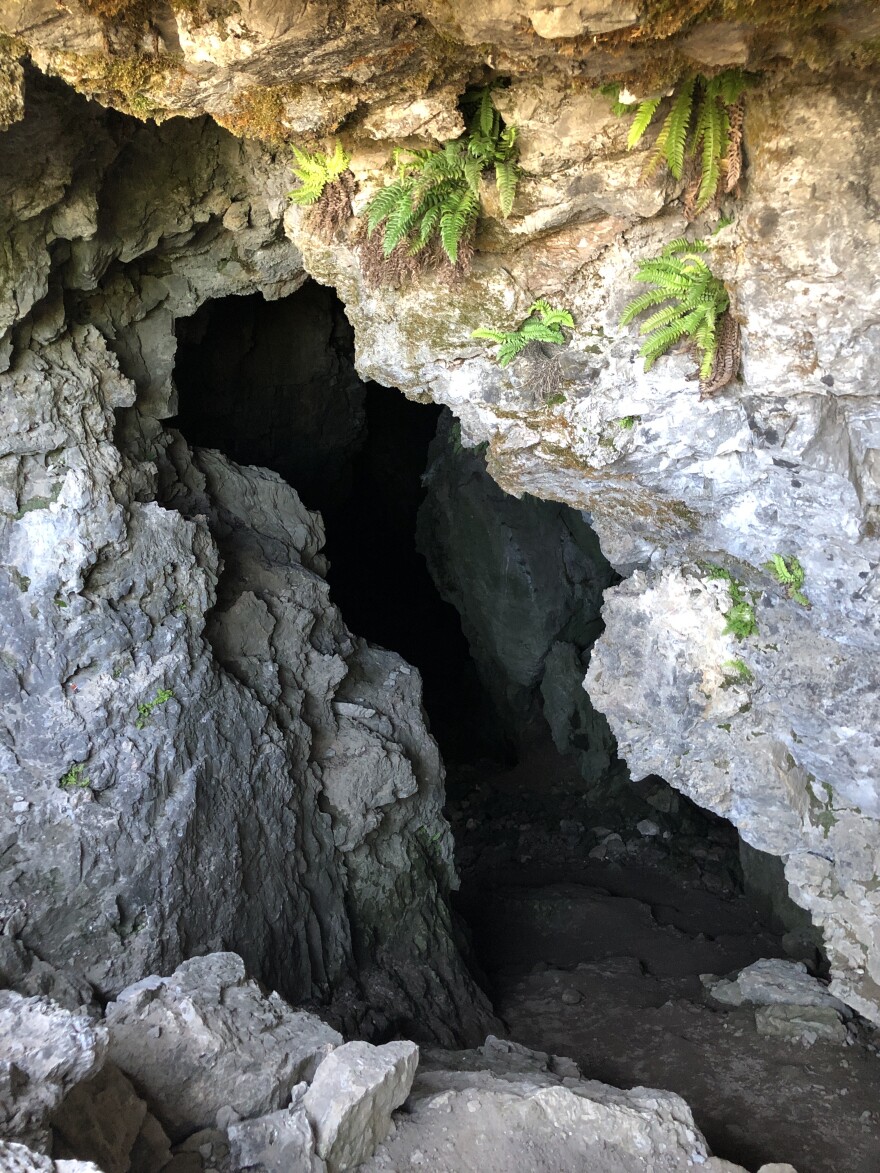Rivers run beneath these hills, carving winding caverns through ancient stone, plumbing a subterranean watershed—a second topography, ever changing. What little we’ve seen must lead further in, places mythology might only describe.
‘Karst topography’ refers to landscapes cleaved apart by the leaching of water through a soluble bedrock layer comprised of carbonate-rich rocks like the limestone and dolomite found throughout Utah’s mountains or the evaporate-type gypsum and rock salt layers found in Utah’s redrock country. Over time, this erosion by surface and groundwater creates pinnacles, rippling fissures, gaping sinkholes, or springs on the surface—deep caverns, plummeting vertical shafts, and winding tunnels through which entire rivers can flow below.
We floated one such river once, in complete darkness, guided only by a subtle current and the voice of our local guide. He said he was of Mayan descent, so we listened closely when he relayed stories of Chaac, the Mayan god of rain, responsible for the generous flow of water through the caverns we explored. Indeed, it is within these same caverns that he dwells, we were told. Further north, in Mexico and the desert southwest, it’s Tlaloc, the goggle-eyed Aztecan deity that controls the rain. He, too, is supposed to reside within the body of the earth.
There’s no mythology I’m aware of for my little corner of the globe. So, scientists and explorers alike descend into the karstic caves of northern Utah to see what they might learn. “Utah is unique,” one such explorer told me, “with some of the most difficult caves that exist in the world, then some of the most spectacular, and some of the most benign.” Intrigued, I set out to see what I could find in my own back yard. Ribs of bleached limestone called karrens spread across a plateau like a washboard road, sinkholes that occupy the better part of an entire meadow, blind valleys sunken into a void in the bedrock, innumerable unnamed springs, and a small, non-descript cavity in the crust—the thing I had really been looking for this whole time.
Main Drain is Utah’s deepest and the nation’s 11th-deepest cave. It’s also wildly difficult and dangerous to navigate, yet absolutely critical to explore for the sake of furthering scientific understanding. I talked to Larry Spangler of the US Geological Survey in Salt Lake City about the significance of karst landscapes like Main Drain. “The caves that are developed in these terrains,” Spangler says, “are…valuable sources of information in regard to changes in climate and landscape evolution over time.” The chemistries of these caves are unique to their environment, and analysis of mineral deposits within the caves can provide insights into how average surface temperatures have changed over time and how wet or dry the landscape above was in any given period. Karst caves can reveal climate data for specific locales that may help us predict how a warming planet might affect our local ecosystems.
The water that flows through Main Drain and other cave systems like it in the form of snowmelt and subterranean streams carves its way vertically and horizontally through layers of bedrock hundreds of millions of years old—providing researchers a literal inside look at the formation of mountains. And as a map of these subterranean watersheds begins to come together, we gain a better understanding of the hydrology of an area and its effects on water quality.
When I spoke to Spangler, he wanted to make it very clear just how sensitive these karst landscapes are to surface activities, for the health of ecosystems and the integrity of watersheds, of course, but also for the health of human communities. The US Geological Survey estimates that as much as a quarter of the world’s population depends on karst landscapes for their water supply. The city of Logan, where my family and I live, sources its water from one of the larger karst springs in the area. The people are drinking straight from the mountain.
Rivers run beneath these hills, and through us as well.


